Workforce Development News
February 14, 2018
Traineeship Students Gain Real Skills
There are many internship opportunities for students at all levels found throughout the Utah educational system. iUTAH traineeships offered between 2013 and the present provided something different. “We knew we had students on the research-oriented campuses in the state that could benefit from gaining skills that were transferrable outside of academia,” said Ellen Eiriksson, iUTAH’s education, outreach, and diversity coordinator. The Traineeship Program is a workforce development initiative developed to provide students with skills that transfer beyond the academic realm, and that contribute to a strong Science, Technology, Engineering, and Math (STEM) trained workforce in Utah.
“Not all undergrads go on to higher degrees or careers in academia,” said Eiriksson. “Traineeships are meant to give students skills that they can take directly to the workforce with them.” Trainees were paired with faculty and other mentors on campuses to gain experience in their laboratories or other work settings. As undergraduates, trainees served as integral members of research teams, learning new skills, and even serving as near-peer mentors, passing those skills onto incoming trainees.
The average student was engaged with the program for one year, although this amount of time varied depending on research needs. Students benefited from a team environment, training alongside graduate students and other near-peer mentors. Below are some examples of the many interesting projects that they were involved in:
- Linking sensor networks to science through ecoinformatics
- Integrating data and models for hydrologic applications
- Exploring green roof food production and green infrastructure water use strategy
- Social science data management
- Quantifying precipitation effects from the Great Salt Lake
One former trainee, Phil Suiter, currently works as a civil engineer for Ogden City. He said that he “enjoyed working in the iUTAH trainee program because it opened my eyes to all the variety of work performed for research studies,” adding that the program “helped me learn the importance of the planning and preparation needed prior to field work which has helped me be more effective as I visit my infrastructure improvement sites.”
Another trainee, Natasha Griffin, worked on the GAMUT project in the Provo River, which she says "helped me to gain experience in doing fieldwork and collaborating with other researchers, which made me more confident about pursuing my own projects. I'm now working on two publications of my own as I finish my senior year, after which I'll head to graduate school in aquatic microbial ecology."
From a faculty perspective, mentors appreciated that the program was not limited to a summer session, so students were available for as long as they were needed. One mentor said “we enjoyed the consistency and enthusiasm that traineeships brought to the lab. The trainees always wanted to learn new skills and were always eager to help in the field and lab."
“As an iUTAH trainee I was responsible for installing, maintaining, calibrating and troubleshooting a wide variety of environmental sensors and equipment,” said Brett Boyer, trainee from 2015 – 2017. “I grew confident that with time and effort I could become an expert on a given piece of equipment and use my knowledge to solve any issues that might come up. I also worked on a challenging project developing a self-contained sensing and datalogging system that greatly increased my programming and troubleshooting experience.” These skills helped Boyer secure a position as a control systems engineer, working with heavy electrical equipment and programming controllers for a gold mining project in Mexico.
The iUTAH traineeship has involved 31 students to-date, many of whom are now employed in water-related technical fields, or continued their educations in graduate school both in Utah and neighboring states. These students benefited from access to iUTAH's diverse range of research and cross-institutional collaboration.
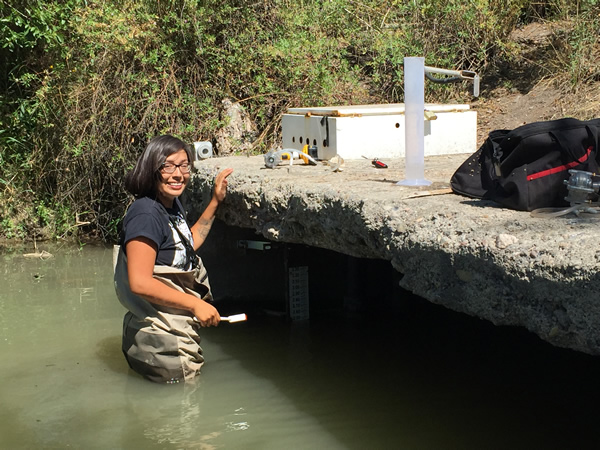
January 31, 2018
Dust on Snow Controls Springtime River Rise in West
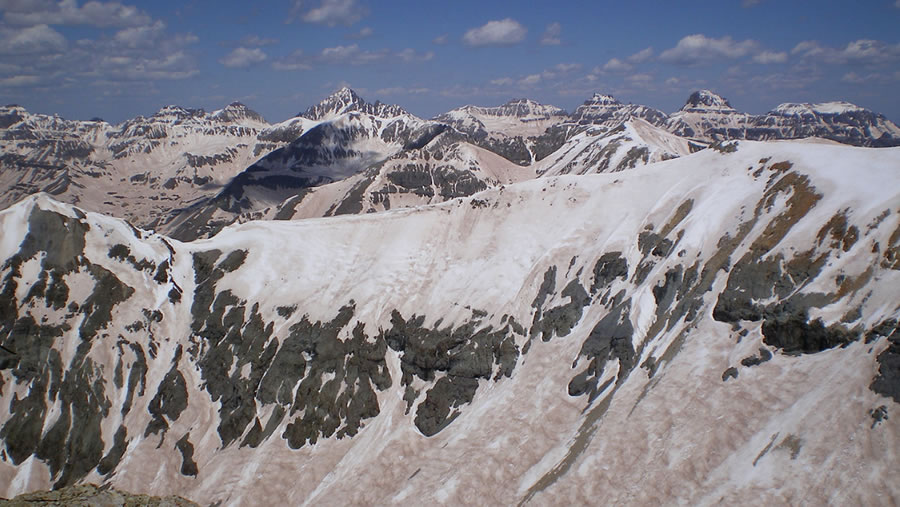
University of Utah and iUTAH researcher McKenzie Skiles has been in the news for her contribution to research on the effects of dust on mountain snowpack during spring runoff. Skiles received funding through an iUTAH Research Catalyst grant on snow hydrology along the Wasatch Front in 2017.
A media release provided by the University of Utah’s science writer Lisa Potter said the “study has found that dust, not spring warmth, controls the pace of spring snowmelt that feeds the headwaters of the Colorado River. Contrary to conventional wisdom, the amount of dust on the mountain snowpack controls how fast the Colorado Basin’s rivers rise in the spring regardless of air temperature, with more dust correlated with faster spring runoff and higher peak flows.
The finding is valuable for western water managers and advances our understanding of how freshwater resources, in the form of snow and ice, will respond to warming temperatures in the future. By improving knowledge of what controls the melting of snow, it improves understanding of the controls on how much solar heat Earth reflects back into space and how much it absorbs — an important factor in studies of weather and climate.
Coauthor McKenzie Skiles, an assistant professor in the University of Utah Department of Geography, said that while the impacts of dust in the air, such as reduced air quality, are well known, the impacts of the dust once it’s been deposited on the land surface are not as well understood. ‘Given the reliance of the western U.S. on the natural snow reservoir, and the Colorado River in particular, it is critical to evaluate the impact of increasing dust deposition on the mountain snowpack,’ she said.”
The article titled “Variation in rising limb of Colorado River snowmelt runoff hydrograph controlled by dust radiative forcing in snow” was published in the journal Geophysical Research Letters. Along with Tom Painter of NASA’s Jet Propulsion Laboratory in Pasadena, California and McKenzie Skiles from the University of Utah, Salt Lake City, other coauthors are from University of Colorado, Boulder; and University of California, Santa Barbara.
Press: Jet Propulsion Laboratory website | UNews
December 20, 2017
WSU Symposium Showcases Student Research
Amid the hectic schedule of finals week, some Weber State University students made time in their busy schedules to present their research findings from participation in iUTAH’s summer iFellows undergraduate research fellowship program and faculty Research Catalyst Grants (RCG). The event was co-hosted by Carla Trentelman, associate professor of Sociology, and Dan Bedford, professor of Geography and WSU honors program director, and attended by students, faculty, administrators, and friends of iUTAH.
This year, two WSU undergraduates, Maggie England and Mike Fowles, were part of a cohort of 15 students that participated in the 11-week summer research experience. During that time, they were actively involved in iUTAH fieldwork, research, and analysis. Working with faculty and student mentors, these students learned about the challenges and solutions needed to sustain the state’s water supply over the next few decades and the environmental impacts that we have on bird species, and aquatic habitats in local watersheds.
Students presenting research at the WSU symposium include Maggie England, Mike Fowles, and Rebekah Holt. Past participant attendees included Cynthia Elliot, 2016 iFellow, William Soule, Summer Institute mentor, and Kassandra Sqrow, who participated in both an RCG and as a Summer Institute mentor.
Rebekah Holt worked with faculty mentor Bridget Hilbig, assistant professor of botany at WSU, on a RCG project focused on enhancing soil complexity to improve sustainable urban agriculture. They constructed a rooftop garden, adding Arbuscular mycorrhizal fungi (AMF) native to Utah to soil and measured growth responses in pepper plants. While the AMF plants grew better, challenges with the location and the growing boxes limited the growth of viable crops. Future research will involve changing the plants from peppers to parsley, and making adjustments to the boxes and watering schedule.
“Ever since iUTAH began, our colleagues at Weber State have been terrific supporters of undergraduate research,” said Mark Brunson, iUTAH Education, Outreach and Diversity director and professor in the Department of Environment & Society at Utah State University. “Our research faculty have greatly enjoyed working with Weber students, and the work they’ve done has made a real contribution.”
In the five years that WSU has partnered with iUTAH, 41 students have been involved in undergraduate research, including 14 iFellows, 7 Summer Research Institute mentors, and 24 student RCG researchers.
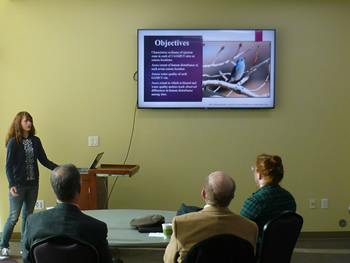
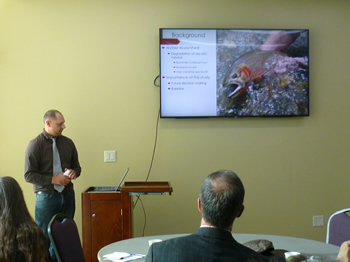
October 11, 2017
iUTAH Researcher Returns to Her Roots
Ka-Voka Jackson, a former iUTAH traineeship participant, has been in the news recently for her research on invasive grass in Glen Canyon. Jackson is leading a team of researchers in a project to learn how best to eradicate invasive ravenna grass from Lake Powell's side canyons and replant with native species. She is a University of Nevada, Las Vegas graduate student in ecology and evolutionary biology, and member of the Hualapai tribe. Here is what reporter Paige Blankenbuehler had to say about Jackson in an a High Country News article dated Sept. 6, 2017:
“With the Southwest’s climate on a trajectory for prolonged drought and weather extremes, Jackson navigates the deep backcountry near Glen Canyon, around the Arizona-Utah border. Here, back home, she is working to eradicate prolific and climate-change-resistant invasives and restore native vegetation….
As part of her graduate research, in collaboration with the National Park Service and Glen Canyon National Recreation Area, Jackson is now assessing dozens of plots, 100 square meters each, in five different canyons. …In April, she took a team of technicians into the canyons to kill or pull up ravennagrass and replant native plants. Jackson is also investigating whether passive re-vegetation — allowing the native plants to come back on their own — can work. Over the course of her program, she will return to monitor her plots, recording details from each to give land managers insight into which methods could work best for Glen Canyon National Recreation Area.”
Jackson is a graduate of the University of Utah, and has a Bachelor of Science in biology with an organismal and environmental emphasis. During her time with iUTAH, she was in the iUTAH Traineeship program and worked directly with the Red Butte Creek GAMUT technicians on their research, as well as other research scientists and graduate students.
Press: High Country News | Nevada Public Radio | Salt Lake Tribune | Utah Public Radio | KJZZ Radio
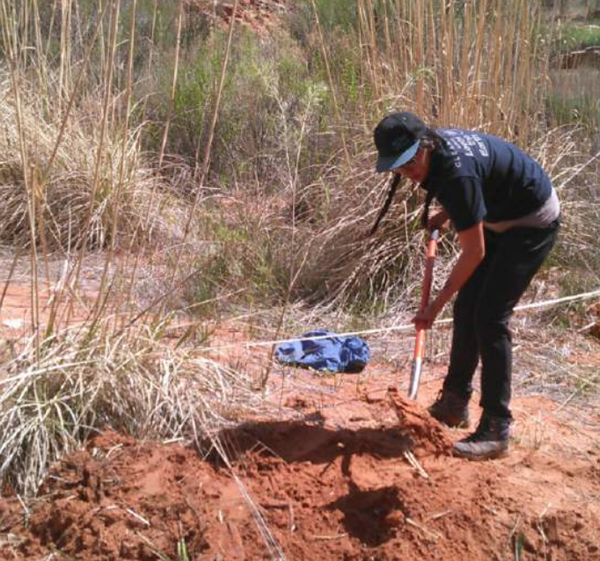
October 5, 2017
Classroom Lesson Leads to Publication
Former iUTAH postdoctoral researcher Erik Oerter has collaborated with Molly Malone, Louisa Stark, and Gabriel Bowen, and others to publish the paper “Every apple has a voice” in Hydrology and Earth System Sciences, a peer-reviewed open access journal.
In the summer of 2016, Oerter served as a mentor in the Summer Research Institute (SRI), a program supported by iUTAH from 2013 – 2016. The program offered students and teachers the chance to become scientists for one week each summer. He designed a one-day water science activity for the program, including lecture, a hands-on lesson about isotopes, food sourcing, and the water cycle, and a computer lab exercise. Participants, which included high school students, undergraduate students, and high school science teachers, then turned what they learned into a poster presenting their research results.
The effectiveness of the activity was assessed through pre- and post-lesson tests, as well as participant surveys. While the lesson was effective at teaching the basics of stable isotope hydrology and the water cycle, the computer lab needed to be more specifically tailored to each participant’s abilities. Oerter felt that he learned much from the teachers while discussing his lesson. A highlight of the week was “seeing the light bulb go on” in the students as they understand complex concepts while creating their posters.
Oerter is currently working as a postdoctoral researcher at Lawrence Livermore National Laboratory in Livermore, CA. His research focuses on the intersection of hydrology and geochemistry, applying the isotope hydrology expertise gained through iUTAH to a broader set of national issues.
Originally, SRI was designed as part of CI-Water, a prior NSF EPSCoR-funded project that brought collaborating institutions in Utah and Wyoming together to address water issues in the West. Through the guidance of Director Louisa Stark and Senior Education Specialist Molly Malone from the Genetic Science Learning Center at the University of Utah, the program engaged 96 high school students and teachers, and undergraduates in 13 diverse research projects reflecting iUTAH's cross-disciplinary approach over four years.
Full study of the article is available below:
“Every apple has a voice: using stable isotopes to teach about food sourcing and the water cycle.”
Authors: Erik Oerter, Molly Malone, Annie Putman, Dina Drits-Esser, Louisa Stark, and Gabriel Bowen.
Related news article:
Collaborative Paper wins HESS Best Paper Award

Credit: Molly Malone, GSLC/University of Utah


